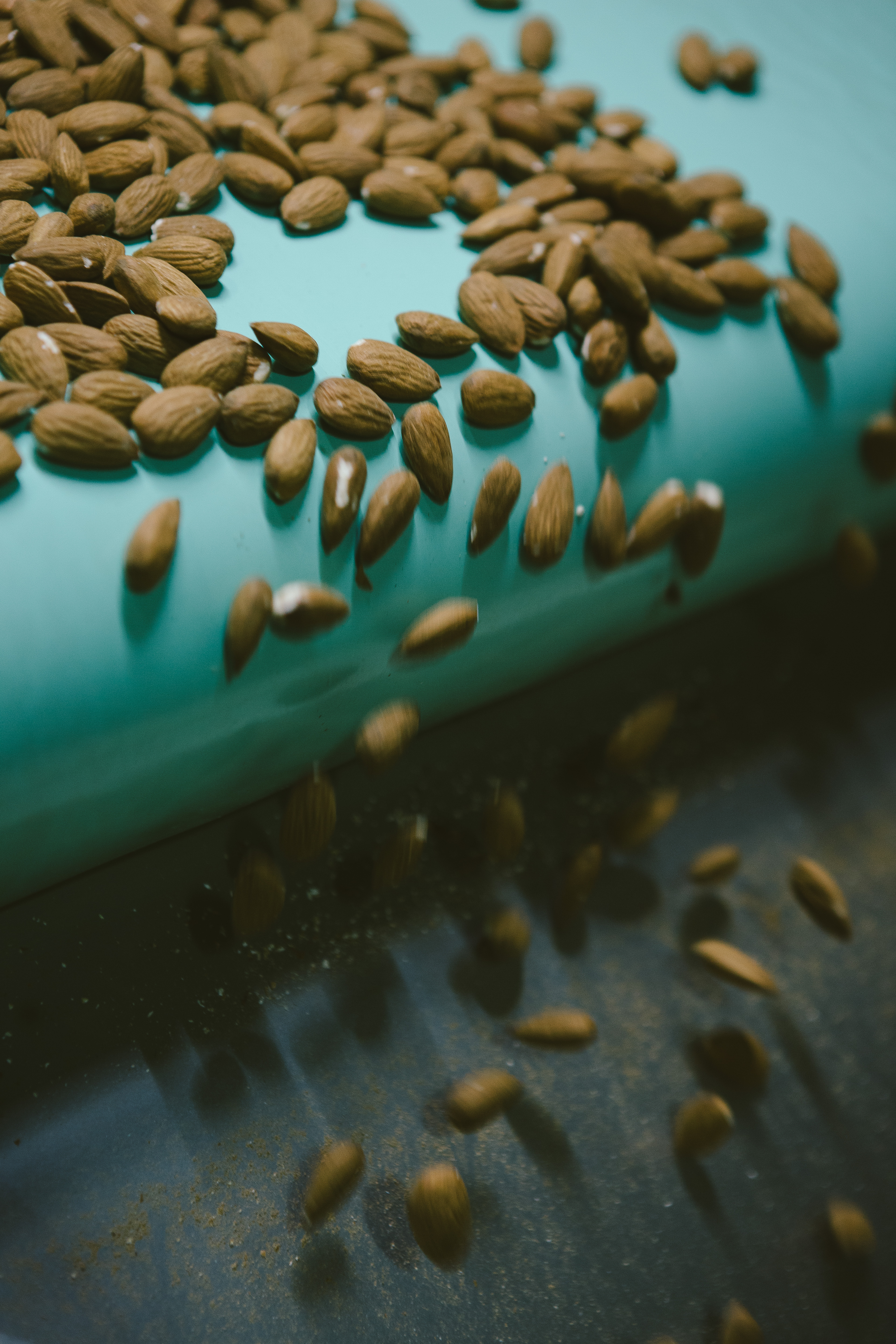(Feb. 7, 2020) The pain of rejection is part of the human condition – it is also an unfortunate reality in the global almond business.
“I’ve lived through this before, and I can tell you, the pain of having a rejected shipment of almonds due to aflatoxin is worse than the pain of when you get told no at your first high school prom,” quipped Brendan O’Donnell, global category director of Nuts at TOMRA Food, during a panel discussion about aflatoxin at The Almond Conference 2019 in Sacramento this past December. The session featured two companies – Optimum Sorting and TOMRA Sorting Solutions – which both use laser technology to identify aflatoxin in nuts based on the fluorescence signature produced by mold residues.
“Effectively sorting for aflatoxin is a journey of continuous improvement for our industry,” said Tim Birmingham, director of Quality Assurance and Industry Services at Almond Board of California (ABC). Birmingham, who moderated the panel at The Almond Conference, said that featuring equipment from Optimum and TOMRA at the conference could help handlers understand how to better identify the needle – aflatoxin – in the haystack.
“We know other sorting technologies can get insect-damaged product out of the stream, but the technologies from Optimum and TOMRA focus on what you do after you’ve already removed that insect-damaged product and you still have low levels of aflatoxin,” Birmingham said. “It’s essentially slicing the pie into smaller and smaller pieces. This technology is really useful at removing low levels of aflatoxin, especially for markets where that can be a problem, such as Japan.”
Current sorting technologies target visual defects commonly associated with aflatoxin, such as molds, decay, insect damage and shrivel. However, aflatoxin can still be present on nuts that appear damage free to the human eye.
“What if we could see the invisible?” asked Mike Parise of MPA Solutions, also a consultant for Optimum Sorting’s laser technology. “We can see the invisible with this technology because some residues of aflatoxin fluoresce, or emit light.”
Both the Optimum and TOMRA technologies use a UV laser light source, which stimulates the fluorescence produced by aflatoxin. The laser technology is extremely sensitive, revealing the slightest amount of fluorescence in a kernel, which indicates the presence of aflatoxin.
“The technology doesn’t detect aflatoxin itself, but does detect the fluorescing ‘by product’ of aflatoxin,” Parise said. “Once those kernels are identified and removed, the amount of aflatoxin can be drastically reduced.”
Improving the detection of something that’s invisible and odorless, especially in small quantities, is be a major step forward for handlers and exporters, who are keenly aware of tougher regulatory tolerances for aflatoxin.
“Every country has its own limits,” O’Donnell said. “Between shipments to the European Union and Japan combined, nearly 40 percent of California almond exports must have less than 10 parts per billion of aflatoxin, which is half the maximum aflatoxin regulatory standard in the United States.”
O’Donnell also pointed out that countries test for aflatoxin using different protocols, which could result in a shipment passing in one country, but failing in another.
“The bottom line is that a uniform, globally agreed to sampling and testing method for aflatoxin doesn’t exist, and that creates uncertainty,” O’Donnell said. “Different quantities and locations in a load are sampled and some samples are tested separately while others are blended.”
O’Donnell noted that detecting aflatoxin can be difficult because it can exist in “little pockets in a load,” which means that testing an entire load is the only way to ensure that aflatoxin levels meet regulatory tolerances.
“UV laser sorting is the final safeguard when it comes to minimizing costs, protecting your brand reputation and the almond industry’s reputation,” O’Donnell said.
For more information regarding The Almond Conference session featuring UV laser sorting technologies, please contact ABC’s Tim Birmingham at tbirmingham@AlmondBoard.com or check out the slides presented at the session on ABC’s website.


